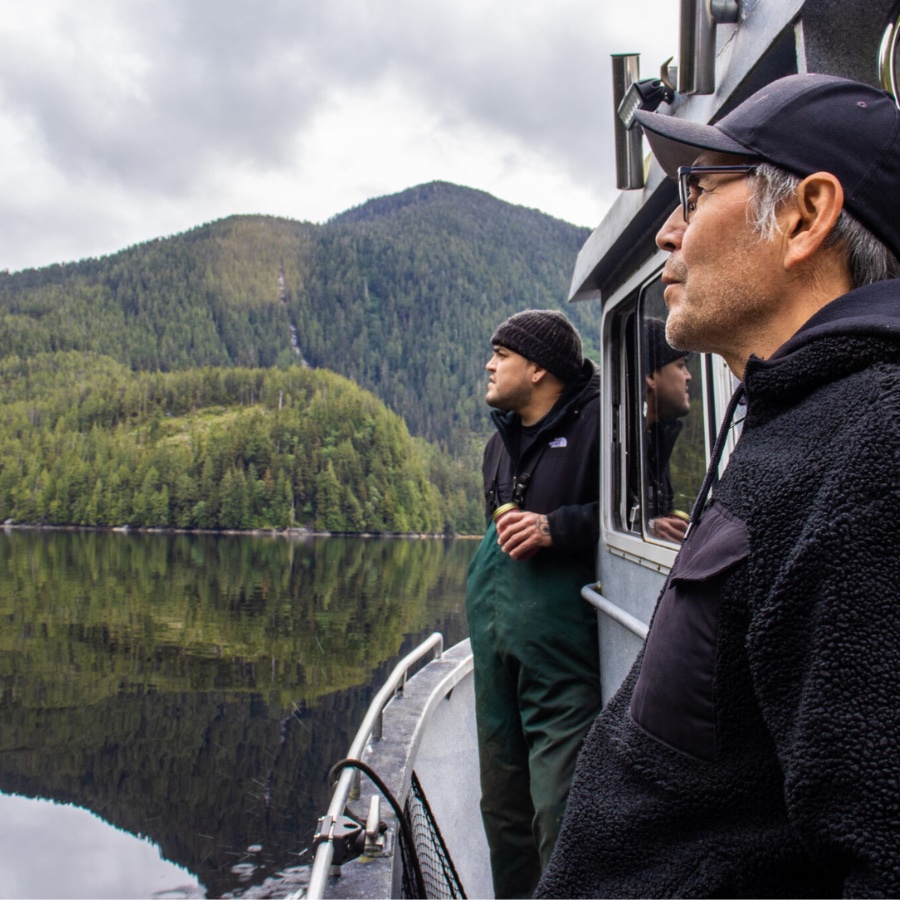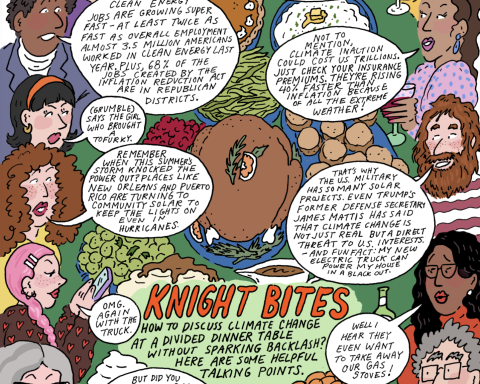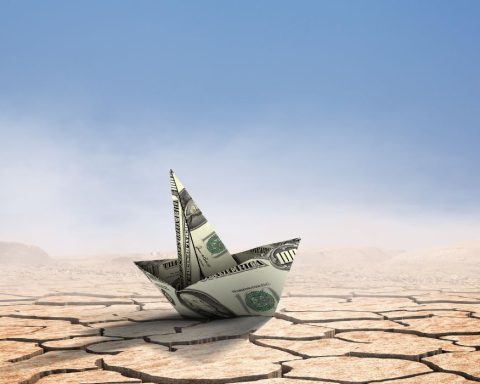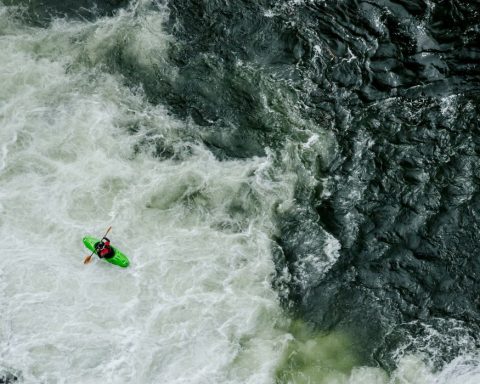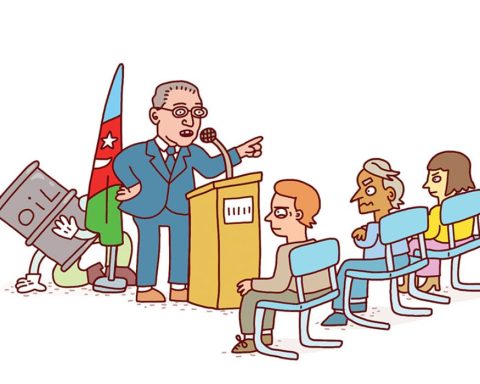Money doesn’t grow on trees, but in the coastal rainforests of British Columbia, salmon do. After swimming upriver to spawn, the fish are fed upon by bears and birds and other predators who litter the forest floor with half-eaten carcasses; these fertilize Sitka spruce and Douglas fir and literally become part of the forest itself – scientists have found salmon-specific nitrogen isotopes in the uppermost needles of coastal conifers. Those trees return the favour by protecting salmon streams with cooling shade and vast root systems that prevent landslides.
This elaborate system is an example of what conservationists call “ecosystem services.” In addition to sustaining life on Earth, these services generate all manner of valuable goods; commercial fishing and coastal logging, for instance, have poured tens of billions into B.C.’s economy over the past century. But those profits have come at a steep environmental cost, illustrating an age-old cycle with a vicious feedback loop: nature provides the essentials for a functioning society and healthy economy, from clean water and food to energy and wood. The more we harvest, the richer we get; the richer we get, the more we consume; the more we consume, the faster nature unravels.
The most obvious solution, protecting large swaths of nature from resource-hungry humans, simply reverses the problem. Instead of making money, environmental conservation renounces profit. Ban logging to protect a forest? Okay, who will pay next month’s rent for those loggers? Where will that money come from? And what will the rest of us use to build our houses?
In the early 1980s, amid dawning global awareness of humanity’s collision course with the biosphere, the field of conservation finance emerged to tackle this conundrum. A blend of economics and ecology, the core goal of conservation finance is to harness free markets to pay for ecological protection.
Decades later, however, the original problem persists. It still costs money to protect nature. And if you follow most money far enough, you’ll arrive at a scene of environmental destruction. Wrecking one part of the world to save another is not a sustainable solution. To truly escape the vicious cycle, you’d have to make conservation profitable. Somehow, nature has to pay for itself.
Which brings us back to the coast of British Columbia, to a place called the Great Bear Sea.
A more intelligent resource economy
On June 25, the governments of British Columbia, Canada and 17 First Nations formally launched the Great Bear Sea initiative. It’s a marine sequel to the Great Bear Rainforest agreement of 2007, which invested $120 million in Indigenous-led conservation over 64,000 square kilometres of B.C.’s island-studded northern coastline. That deal converted a resource-loaded region the size of Ireland to ecosystem-based management – logging hasn’t stopped, but 70% of the Great Bear’s old growth is now permanently protected. More than 100 new businesses have been created (everything from small-scale forestry and ecotourism to solar power instalments, kelp farms and tug-boat operations) along with a thousand full-time jobs.
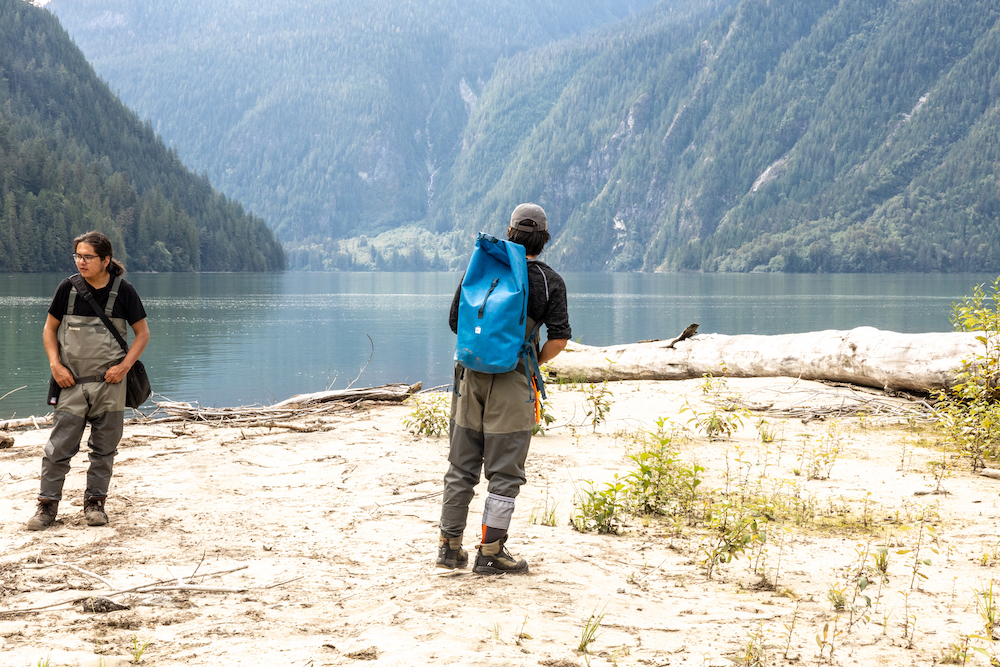
The Great Bear Sea initiative more than doubles that scale. It places 100,000 square kilometres of some of the world’s richest fishing waters under joint Indigenous-Crown authority and gives Coastal First Nations $335 million ($200 million from the federal government, $60 million from B.C. and $75 million from private donors) to build a new economy.
“Our leaders of the day knew the Great Bear Rainforest agreement was going to be a blueprint for us to continue on with this important work,” says Christine Smith-Martin, CEO of the Coastal First Nations coalition and a key negotiator of this new Great Bear Sea initiative. “We are the stewards of our territories. We’ve been able to measure how many new sustainable businesses our communities have grown since we signed that agreement. It’s not just us saying it. We’re actually tracking it.”
Over the next 20 years, Great Bear Sea funding is expected to seed 200 new businesses supporting 3,000 jobs in sustainable fisheries, manufacturing and processing, marine stewardship and research, transportation, ecotourism and more. The Great Bear Rainforest delivered a three-to-one return on its initial investment; this one is forecast to attract $750 million in future business investments.
We’ve been able to measure how many new sustainable businesses our communities have grown since we signed that agreement.
—Christine Smith-Martin, CEO, Coastal First Nations
A substantial portion of the funds will also go into expanding the network of Guardian Watchmen programs that monitor the coast, like a hybrid of biologist and coast guard. But the Great Bear agreements aren’t just aimed at protecting nature; they’re also designed to protect industry. The north coast isn’t being turned into a national park. Coastal First Nations depend on fishing and logging as much as non-Indigenous people do, supplying almost half the workforce of both industries.
In order to survive, those industries have to change. British Columbia, long a poster child of colonial resource extraction, has almost eaten through its entire ecological inheritance. Eighty percent of the province’s primary forest has already been logged, while salmon and herring populations are at less than a 10th of their pre-industrial abundance.
“We have to be a more intelligent resource economy,” says Nathan Cullen, B.C.’s minister of water, land and resource stewardship. “There’s some that choose to say we either have to maintain the practices of three generations ago or shut it all down. Those extremes are not at all where the solution lies. The environment is telling us we’re coming up against the limits of what you can do sustainably. Whether it’s climate change, declining salmon, more expensive forestry operations, forest fires, the list is pretty long in terms of the feedback that we’re getting.”
Cullen emphasizes three interconnected priorities guiding the provincial government: “Reconciliation over governance of the land. A historic protection of land and waters. And a much more sustainable natural resource economy. When we stand up good conservation projects, we have to keep our eye on all of those three primary elements at the same time.”
In the Great Bear Sea, that translates into an overall reduction of just 8% of the commercial catch, from salmon, halibut and cod to shellfish. But the remainder will be far more targeted than before. A network of biodiversity hot spots and vital spawning grounds, known as marine protected areas, will see tight restrictions placed over 30,000 square kilometres of ocean.
“Sometimes you hear people say, ‘Oh, we’re gonna shut down the coast’ – that’s not it at all,” Smith-Martin says. “We always lead these conversations with ‘The reason we are doing it is not just for us. It’s for you, too, so that you can pass on your boat to the next person in your family. If we don’t do these protected areas, you’re going to have nothing.’”

How nature can pay for itself
Expressing the value of life in dollar terms is a fraught enterprise; it calls to mind Oscar Wilde’s definition of a cynic as someone who “knows the price of everything and the value of nothing.” On the other hand, it’s helped stop traditional economists from treating ecological collapse as an externality. And the numbers do tend to be eye-opening, even if they involve large margins of uncertainty.
A 1997 study published in Nature, for instance, concluded that global ecosystems provide between US$18 and $61 trillion worth of goods and services to civilization, roughly on par with the cash then circulating in the global economy. A 2010 analysis of the forests and wetlands surrounding Vancouver found that these provided $5.4 billion worth of ecosystem services per year. A 2022 study of Grindstone Creek, west of Toronto, discovered $2 billion worth of flood protection alone.
Figures like these underpin conservation finance, which has turned protecting nature into a global business worth some US$50 billion per year. There is now a dizzying array of international markets and financial mechanisms devoted to preserving ecosystems around the world. Carbon credits, conservation trust funds, resilience bonds, habitat mitigation banking, debt-for-nature swaps and too many more mouthfuls to name have helped bankroll the protection of countless ecosystems, from the cloud forests of Costa Rica to Zimbabwe’s Zambezi River.
What sets the Great Bear Sea fund apart is the direct involvement of Indigenous communities, and the fact that industry here is being reformed instead of cancelled. Nature-protection schemes have a long history of overlooking the people who actually live in said nature (usually Indigenous), often kicking them out to turn their home into a park. But the Great Bear Sea initiative was led from the outset by First Nations; their goal is to keep harvesting every possible resource from the region, just more sustainably than industry has up to now.
Sustainable harvests don’t deliver the short-term bonanza that comes from total liquidation, but if you can learn to live on that interest, you’ll never go bankrupt
The financial model itself is also unique. Half the Great Bear Sea fund is stored in a permanent endowment: money that generates interest, and you spend only the interest. This model of conservation finance has its own ungainly name: project finance for permanence, or PFP. The 2007 rainforest agreement was the first PFP in history; a handful of others have been implemented since, mostly in South America. Altogether, just over two million square kilometres of the earth’s surface – an area the size of Mexico – is now covered by PFPs.
“I would compare it to a private–public partnership,” says Eddy Adra, CEO of Coast Funds, a trust fund created to manage the money first delivered by the Great Bear agreements. “It’s a way of funding a large infrastructure project, where the large infrastructure project in this case is the conservation of a globally significant, ecologically significant territory.”
PFPs offer a good metaphor for the sustainable economy now coming into view on B.C.’s north coast. Think of an ecosystem as nature’s permanent endowment. Human industry can skim off the interest that accrues each year – a certain amount of salmon and oysters and spruce and cedar – but mustn’t dig too deep. That’s how nature pays for itself, with no need for a bailout. Sustainable harvests don’t deliver the short-term bonanza that comes from total liquidation, but if you can learn to live on that interest, you’ll never go bankrupt.
First Nations lived by that economic model for thousands of years before colonization; their leadership now is a defining characteristic of the Great Bear PFPs. “In a typical model, you would see global funders come in with conservation goals and work with government directly,” Adra says. Indigenous communities would be consulted near the end of the process only, if at all. “The Great Bear Sea PFP really flipped that upside down,” Adra says. “This was something the Nations had been developing for 20 years. And when the opportunity came along, they brought in their partners to the table to get this done.”
That opportunity was a rare confluence of provincial and federal priorities – a different kind of PFP, and every bit as crucial as the money. In 2019, British Columbia became the first jurisdiction in the world to sign the UN Declaration on the Rights of Indigenous Peoples (UNDRIP) into law; the Declaration Act requires B.C. to share decision-making authority over the land base with more than 200 First Nations across the province. Canada followed with a federal version two years later. These are now the only two governments on the planet to have gone beyond casting a symbolic vote for UNDRIP, turning the voluntary declaration into binding legislation. Their collaboration is crucial, since oceans fall under federal jurisdiction and forests are provincial.
Then in 2022, Canada hosted the UN Biodiversity Conference (COP15) in Montreal, where member countries agreed to protect 30% of their land and water by 2030. The federal government’s $200-million contribution to the Great Bear Sea comes from an $800-million fund created to meet that commitment.
“It’s not many countries where you have governments sit at the table and say, ‘Okay, Indigenous-led communities, you guys can lead this process and we’ll be partners,’” Smith-Martin says. “It’s a good road map for Indigenous communities, philanthropic communities, federal and provincial governments. How does this all work and what kind of commitment did it take to get here?”
As the ecological crisis deepens, that road map points the way to a new kind of treasure. The Great Bear Sea may be unique, but the history of extraction it’s working to reverse is all too universal. Citizens around the world, searching for a way out of their own vicious cycles, can now look to B.C.’s north coast and say, “X marks the spot.”
Arno Kopecky is a Vancouver-based journalist and author. His latest book is The Environmentalist’s Dilemma.
Reporting for this story was supported by the Sitka Foundation and the Science Media Centre of Canada.
